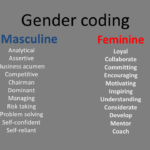| By David Wessel From The Wall Street Journal Online
There’s a new myth percolating about the U.S. economy: Female workers are doing great. So are educated men. The only ones hurting are male high-school dropouts. So, the argument goes, cut the whining about globalization and technological change hurting the American middle class, fix the education and training system, and get on with it. It’s a nice story. Unfortunately, it isn’t true. Women are closing the pay gap with men and are outpacing men in the race to get college diplomas. But the fact is that the remarkable burst of productivity of the past decade has not been widely shared with the women or men living at the middle of the American middle class. “Women are doing better than men, but still not good — in the sense as not as good as from 1947 to 1973 and not as good given the strength of productivity growth,” says Lawrence Katz, a Harvard University economist who has become the arbiter of arguments about the American labor market. “If men had done as well as women, things would look much brighter, but people would still be questioning why the median worker hasn’t earned more.” Justifiably uneasy about Democratic politicians’ demonization of globalization, labor economist Stephen J. Rose of the centrist Democrats’ Progressive Policy Institute is the latest to raise his voice to argue against what he calls the “dark vision” that “the American middle class is disappearing.” Part of his case, expressed in a PPI monograph adapted for an op-ed piece in this newspaper, is this: “For three-quarters of the American work force (women and the top half of male earners), economic growth [between 1979 and 2005] translated into earnings gains….For the clear majority of the work force, then, the job market has become more welcoming.” He does, however, offer a rather significant admission: “The last six years have seen very little wage growth for the bottom 80% of the work force.” A few caveats: (1) The choice of years to compare, the particular wage measure used and the way one adjusts for inflation can tilt the data toward a brighter or gloomier picture. (2) Men and women tend to live together, so when wages for one go up and wages for the other go down, they share the pain or gain. (3) In many ways — cleaner air, healthier children, amazing technology — the middle-class American family is far better off than it was 35 years ago.
A few facts:Women are gaining on men. Women who worked full-time, year-round earned less than 60% of what men earned until the early 1980s, when social attitudes changed and women moved into high-paying jobs once reserved almost exclusively for men. As recently as 1970, more than half the 30-something working women with college degrees were teachers; now it’s less than one-fifth. In 2006, the Census Bureau says, the typical woman earned 77% of the typical man’s wage. But, as the accompanying chart demonstrates, the men and women at the statistical middle of the middle haven’t done all that well. The typical man earned $42,261 last year, which is 2.7% more than the typical man earned in 1996, adjusted for inflation. For women, it’s $32,515, up 7.1% — better, not great. In the same decade, output per hour of work, known as productivity, climbed nearly 30%. (Yes, some of this discrepancy is because employers spent more on health insurance and had less left over for wages, but a lot is because the gains of recent growth have gone to the very best-off.) Women are getting more education. In 1960, there were 1.6 men graduating from four-year colleges for every woman, according to Mr. Katz and his Harvard colleague, Claudia Goldin. By 1980, there were as many women as men graduating. Today, there are about 1.35 women graduates for every man. But the noteworthy gap is between workers with education and workers without, regardless of gender. The payoff for getting a diploma traditionally has been greater for women (in the past, some men got high-paid blue-collar jobs), and that’s still true. The bigger story is how much more valuable a college diploma is than it was 30 years ago, and how much of a penalty a worker pays for not going to college. The gap between women’s wages and men’s is narrowing, but…the gap between economic winners and losers of either gender is widening. And the patterns of inequality among women are more similar to than different from the patterns among men: Earnings at the very top are growing much faster those at than at the middle or the bottom. Everything else is detail. Former Treasury Secretary Lawrence Summers puts it sharply. If the distribution of income in the U.S. today were the same as it was in 1979, and the U.S. had enjoyed the same growth, the bottom 80% would have about $670 billion more, or about $8,000 per family a year. The top 1% would have about $670 billion less, or about $500,000 a family. The bottom line: The economy treats female workers more like male workers than it did a generation or two ago. That’s a welcome fact. But it doesn’t obscure the unwelcome reality that the fruits of America’s prosperity aren’t being widely shared.
Also of Interest
— November 02, 2007 |
|||
|










